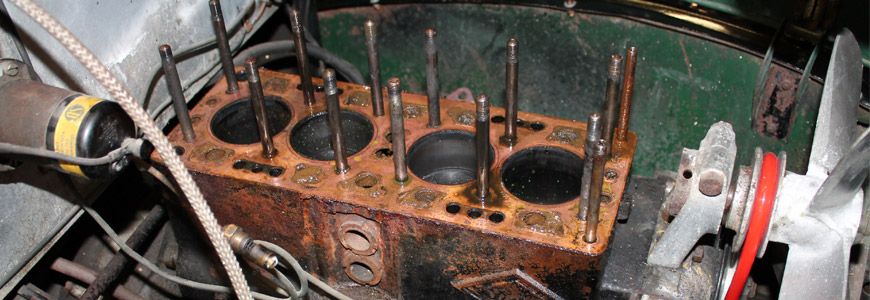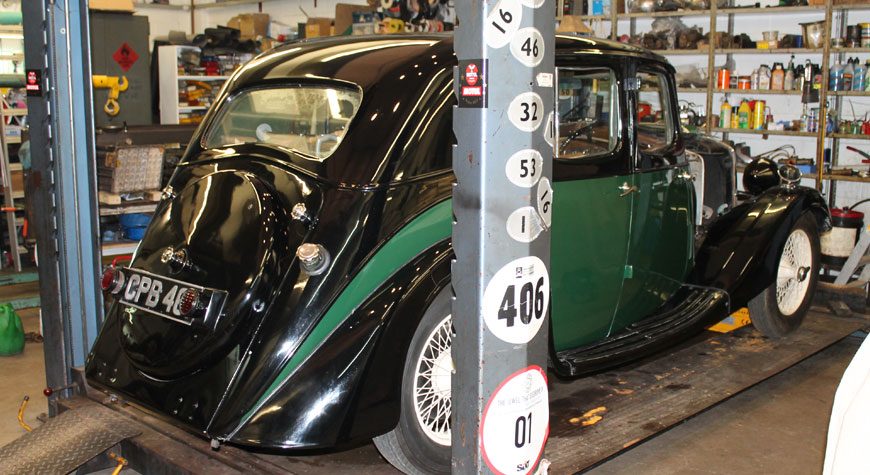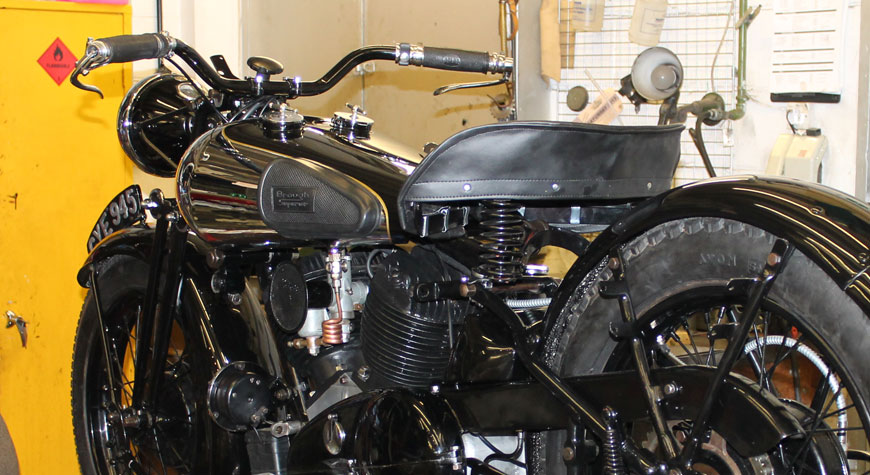
Sympathetic use of a historic motor vehicle is a tried and tested method of ensuring its preservation. There is no better way to circulate oil around an engine, to stop a braking system seizing up, or to simply ensure everything remains in perfect working order. Many of the vehicles in the National Motor Museum are kept in flight-ready condition for this purpose. However, reversing the effects of inactivity on a car or motorcycle can be a painstaking process.
Head Ache
 The museum’s 1934 Riley Falcon is undoubtedly an elegant machine with its streamlined styling, while its sophisticated 1496cc twin-cam engine and pre-selector gearbox set it apart from more conventional saloons of the era with side-valve engines. Unfortunately, when called upon to act as a film prop at the end of 2014, engine woes denied this car its moment of silver screen stardom.
The museum’s 1934 Riley Falcon is undoubtedly an elegant machine with its streamlined styling, while its sophisticated 1496cc twin-cam engine and pre-selector gearbox set it apart from more conventional saloons of the era with side-valve engines. Unfortunately, when called upon to act as a film prop at the end of 2014, engine woes denied this car its moment of silver screen stardom.
With the Riley moved to the workshop, it quickly became clear that modern fuels had interfered with its pre-war engine. Workshop engineer Mike Gillett explains: “When I started to strip down the top half of the engine, I discovered a hard, paint-like coating inside the inlet manifold and the inlet ports. On closer inspection, this turned out to be solidified fuel residue, which had gummed up the valves.”
As an unhappy consequence, one of the valves had seized solid, bending in the process and fracturing its rocker. Mercifully, the bottom end of the engine was unharmed by this trauma. Following a careful cylinder head rebuild, with the addition of replacement valve gear, this attractive sporting saloon will be back in fully-functioning condition once more.
Superior Machine
 Mike has also been busy rebuilding another high quality machine. The museum’s 1936 Brough Superior 1150 motorcycle and sidecar combination is a product of one of the world’s most highly regarded motorcycle builders. George Brough designed, built, promoted and competed with his own two-wheeled creations, earning an enviable reputation. Followers of the marque that he created called it ‘the Rolls-Royce of motorcycles.’ T.E. Lawrence, otherwise known as Lawrence of Arabia, always favoured his Brough Superiors, famously meeting his end while riding on one.
Mike has also been busy rebuilding another high quality machine. The museum’s 1936 Brough Superior 1150 motorcycle and sidecar combination is a product of one of the world’s most highly regarded motorcycle builders. George Brough designed, built, promoted and competed with his own two-wheeled creations, earning an enviable reputation. Followers of the marque that he created called it ‘the Rolls-Royce of motorcycles.’ T.E. Lawrence, otherwise known as Lawrence of Arabia, always favoured his Brough Superiors, famously meeting his end while riding on one.
The museum’s example is nearing the end of a fastidious and long-running restoration. Following the installation of new liners in the cylinder barrels, in order to re-use the original pistons, it transpired that further work was required on the 1096cc V-twin engine. “It quickly became clear that the oil pump’s scavenge gear was worn out,” explains Mike. “With that sorted and the engine reassembled, I’ve been able to concentrate on assembling the magneto, as well as piecing the exhaust system back together.”
Fitting the speedometer will be the finishing touch, while Avon sidecar-specification tyres have been fitted. Meanwhile, the frame of the matching Alpine Grand Sports sidecar has been chromed in readiness for the refitting of its coach-painted body. It won’t be long before this imposing motorcycle can finally be reunited with its equally impressive sidecar.
